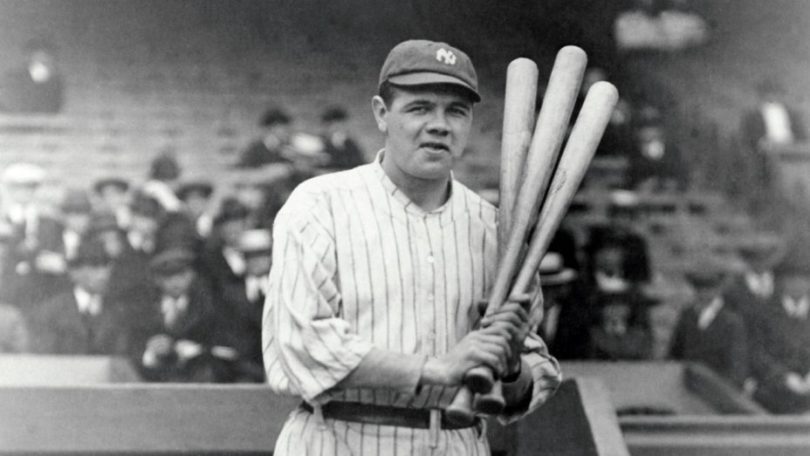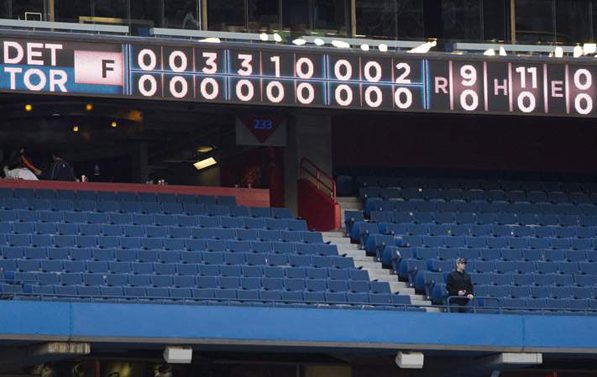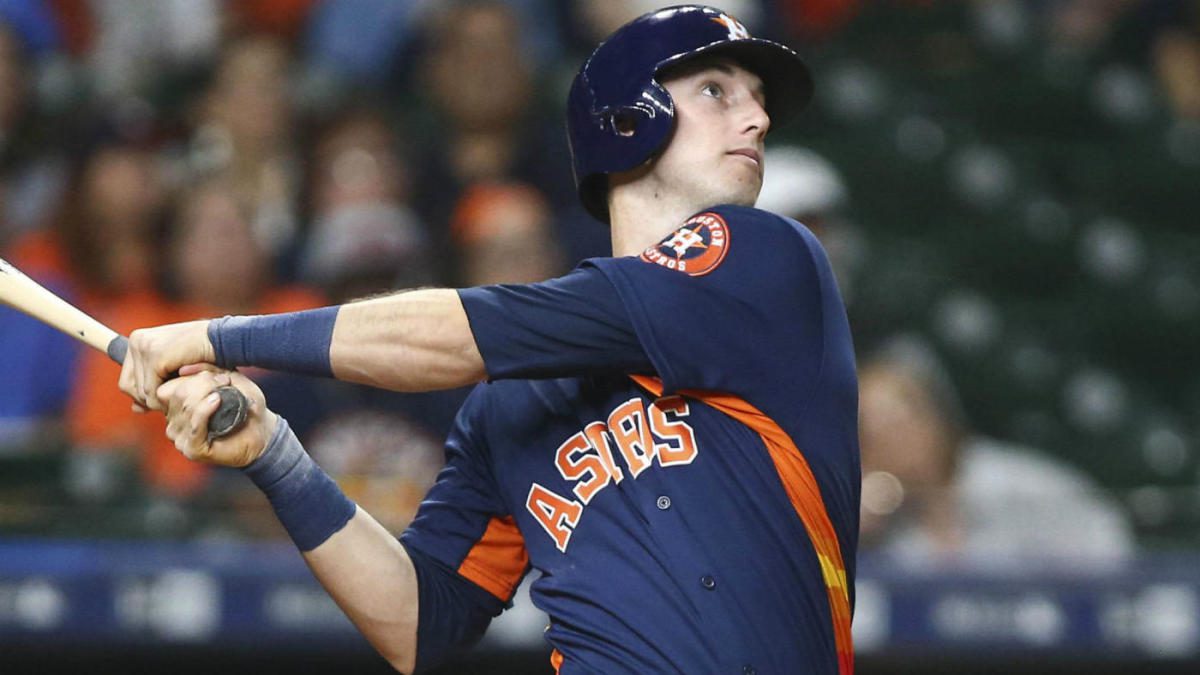

As some of you may have noticed, I didn’t have a new column earlier this week, and I have to admit that the outpouring of concern and appreciation was a bit overwhelming — hearing about how my column had become a weekly ritual of sorts and that its absence somehow left a hole that might never be filled. (Thanks, again, mom, for calling.)
But, as the master wordsmith Lord Whitesnake once said: “Here I go again.”
This week is a pretty big deal in the baseball world. It’s the trading deadline. For those of you who don’t really know what that means, it’s the “deadline” for when teams can “trade.” You’re welcome.
All sports have a trading deadline — even the WNBA, but they are not allowed to trade for men because then the game might be just a little bit watchable and that is not allowed. Actually, baseball is the only sport that has two trading deadlines, but we’re not going to get into that here other than to mention that all of the hubbub about the finality of this week is a little exaggerated.
So, let’s focus on this first trading deadline. Here’s the real scoop: Some players are going to get traded from the team they are currently on to another team for who they will then continue their baseball-playing activities. It sounds pretty simple. But it isn’t. It’s all very exciting this week, and there are rumors flying everywhere about which players are changing teams and what they’re being traded for.
I’ve always thought trading players to be a very curious aspect of sports that doesn’t really mirror life at all. You can trade objects — toys or Pokemon cards or DVDs, but you can’t trade people (well, not for the last 150 years or so). And you don’t trade people from job to job or country club to country club or marriage to marriage — unless, of course, you’re former baseball players Mike Kekich and Fritz Peterson who, in the ’70s, did that very thing and traded entire families.
I know! Isn’t that nuts? I mean, it was the ’70s and those were crazy times, but you have to figure cocaine or LSD had something to do with that decision-making process.
Oh, right, I was talking about trading players. Baseball allows the opportunity for teams to trade proven veterans for potential younger talent or just to save money because Frank McCourt needs to buy another house so that his wife has a house that she can go swimming at and not use for anything other than that!
Trading players is one of the reasons people enjoy fantasy baseball so much. It makes you feel like you’re really a general manager. I’m currently in the process of trading away all my younger players to make a big push for the last two months. So, yeah, it’s almost exactly like baseball — except for the part where it’s not real and nobody really cares about it other than me. So, I won’t bother to tell you about a recent fantasy baseball trade fiasco that has kind of ruined my life a lot more then something so small should ever. (Cory, you know I’m talking about you, you b-hole.)

In real baseball (with actual human beings on actual teams that actually play against each other), the decisions about whether to make trades and whom to make them with and what to get in return are all a pretty serious matter. What it really comes down to is what the great Kenny Rogers once said (not the freakish, goateed Kenny, but the fully bearded Kenny with the piercing, soulful eyes who looks right into your soul through the radio):
You’ve got to know when to hold ’em
Know when to fold ’em
Know when to walk away
Know when to run
There are “buyers” and there are “sellers” and there are “do nothings.” And this is the time of year when teams have to figure out which one they are because the season is two-thirds over. If there’s no way to make the playoffs, some teams become sellers and trade away their pricey veterans to teams that are in contention (or who think they are) for some young prospects in return. Outside baseball, men are like this. They get two-thirds through their lives and then it’s time to trade in their car for a newer sportier model; or trade in their wife for a newer sportier model.
Those are the buyers and sellers, and, frankly, any team that does nothing should just fire their general manager right now because that is a moron who doesn’t know how to improve a team. As the guy running the team, you need to know if you’ve got e real shot at the playoffs. But some of these guys don’t seem to have any idea what’s really going on. That’s why they invented words like “delusional” and “crazy balls” and “you’re fired.”
If you aren’t going to the playoffs, trade away everything you can for young prospects. Ship out every player that isn’t nailed down — okay maybe not every player, but certainly every player not in your long-term plans. If you’re only going to win 80 games, then nobody cares if you trade away some veterans and then the team only wins 78.
The big question on everyone’s lips (or fingers, because most people don’t type with their lips) is “which teams are ‘buyers’ and which teams are ‘sellers’?” I’m not going to list off which teams need to hold ’em and which teams need to fold ’em. Those of you that care can look at the standings and see for yourself.
So, now the buyers are looking around trying to see what proven veterans they can add to help them make it to the playoffs and then, once you’re in the playoffs, anything can happen — like the Giants last year, easily one of the worst teams ever to win the World Series.
The sellers are looking at the buyers and trying to figure out how badly they can fleece them. The Mets just did this to the Giants in the recently completed Carlos Beltran trade. Brilliantly played by the Mets. They get young and talented Zach Wheeler for six years and they gave up 60 days of Beltran. The Giants are hoping Beltran will boost their anemic offense — though they also benched Brandon Belt in favor of a player that is sub-anemic (this is probably not a word and yet it clearly describes the affliction known as Aubrey Huff). Belt’s numbers are better in every facet of the game except for the one that’s the most embarrassing for the general manager: salary.
Buyers hope they’ll get a player who will do what pitcher Cliff Lee did for the Rangers last year and push them up over the top and take them all the way to the World Series. Or maybe they’ll get a player who comes over and catches fire with their bat like Manny Ramirez and his steroids (allegedly) did for the Dodgers in 2008. The Phillies are the best at this — year after year they dump over-hyped, craptastic players on teams with feeble-minded general managers (almost all of them).
The sellers all want to do what the Indians did to the Dodgers back in 2008 when they traded the extremely adequate Casey Blake for star catching prospect Carlos Santana, who is now the Indians starting catcher; oh and by the way, one of the best catchers in the game. Somehow everyone knew the Dodgers were getting robbed on this one except for Ned Colletti.

Probably a way to avoid making these kinds of horrible, horrible trade mistakes is to ask some of your scouting guys what they think; or if they’re not available because they’re too busy playing Angry Birds, then maybe you look on the Internet and see what other independent talent evaluators are saying. Or you can go into some chat rooms and mix it up with a fake user name. Or create one of those bogus email addresses and email the other general managers to see what they think. It just seems like there’s an awful lot of technology and resources out there to help you see that you are about to make a colossal error.
In between the buyers and sellers is the trade deadline limbo for teams that think they are buyers but really they should be sellers. You guys know who you are: Pittsburgh, Cleveland, Cincinnati, Minnesota. Give it up. You’re not going to make the playoffs unless you swap out half of your team. “But, Jed, we are only a couple games behind the Cardinals.” Stop it, Pittsburgh. You’re just embarrassing yourselves. “But, Jed, we can catch up to the Tigers.” Hey, Cleveland, do you guys remember that time when you were in first place by a bunch and then plummeted back to Earth because you weren’t really that good and had just gotten lucky against a soft schedule? Yeah, me, too.
It’s time to start moving out players and maybe some of the prospects you bring in will help you not stink next year. The worst thing these folks can do is trade away some of their young, upcoming talent to “help” their team for this year only. That’s like trying to put a band-aid on your neck after you’ve been decapitated. Okay, I’ll be honest with you, I’m a little perturbed that I used the word “folks” earlier in this paragraph and I feel my little analogy there went way off.
But, you guys get the point, right? Don’t give away your future All-Stars just so you can get a player who will only help you still not make the playoffs. Let the real buyers mortgage their futures.
Speaking of which, buyers, go out there and make your teams better. Each one of these trades, big or small, can increase your team’s probability of making the playoffs and the possibility of winning the World Series. Be bold! But be careful. For every Cliff Lee and Manny Ramirez, there are a dozen busts. And it’s “black jack, no trade backs” – once you send away that future All-Star, he’s gone forever.
Unless, of course, you trade for him at next year’s deadline.






